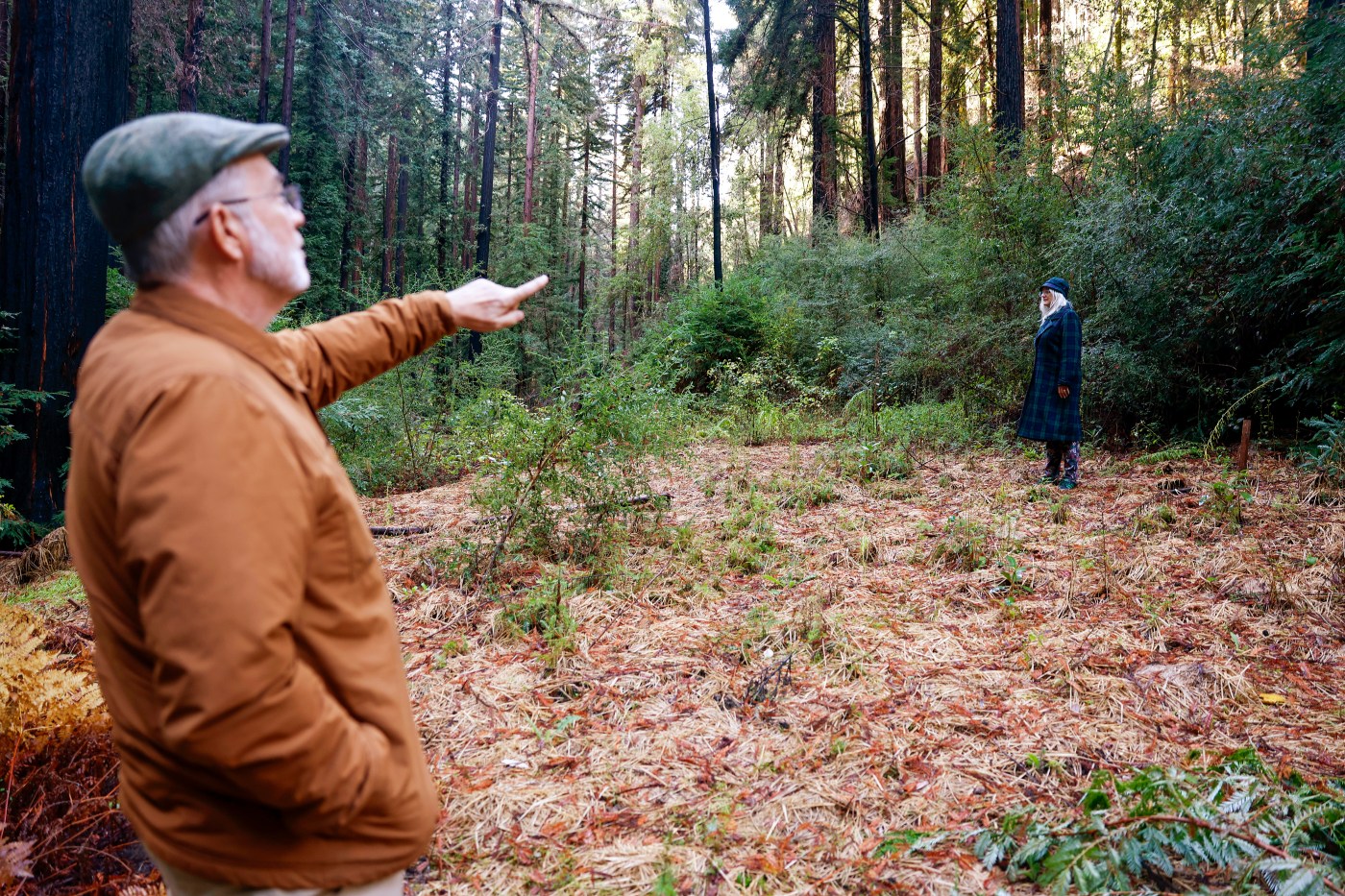
As climate “whiplash” worsens, post-CZU soil erosion in the Santa Cruz Mountains reveals post wildfire problems
As a torrent of mud, timber and boulders roared through Foreman Creek in the Santa Cruz Mountains on Dec. 13, 2021, video later posted to YouTube by county officials showed an avalanche of debris narrowly missing the deck on one resident’s property.
Related Articles
Beyoncé gives $2.5 million for wildfire relief as entertainers including Paris Hilton, Eva Longoria and more give too
Palisades, Eaton fires held in check; winds not as fierce as predicted
California Democrats plan to tap new climate bond for LA wildfire recovery
Opinion: In L.A.’s darkest moment, tireless Angelenos shine with aid and food
What caused Palisades, Eaton fires in LA County? Multiple investigations look for answers
While it was triggered by heavy rainfall, the terrifying debris flow was a delayed result of the CZU Lightning Complex fires, which had destroyed almost 1,500 buildings in San Mateo and Santa Cruz counties just a year earlier. The flames, which came within a quarter mile of the creekside home, stripped away the trees and other vegetation that once held the soil in place, leaving an unstable landscape exposed to the relentless force of water.
As residents of Los Angeles sift through wildfires that have destroyed thousands of homes in January, what happened in the Santa Cruz Mountains provides a stark example of the lasting hazards posed by climate “whiplash” — drastic swings between extremes of wet and dry weather that are becoming more severe as the world warms.
A scientific paper published last week in the journal Nature Reviews Earth & Environment suggested that such “whiplash” events could increase as much as 52% in some parts of the world, and could lead to a shift in water management strategies, requiring preparations for droughts and floods at the same time.
Today, more than four years after the devastating CZU fires, many Santa Cruz Mountains residents are still grappling with the threat of erosion. Some, like those whose homes line Foreman Creek, live under the specter of evacuation when the rains come each winter and threaten another debris flow. Others who lost their homes in the fire have faced a long and costly slog to stabilize the soil on their land so they can rebuild. Some residents have unknowingly contributed to their erosion problems by aggressively removing vegetation in the hope of protecting themselves from future wildfires.
Surveying the blackened redwoods towering over a creek bed piled high with debris, just upstream of where the debris flow video was shot, Santa Cruz County assistant geologist Jessica deGrassi can see the danger here is far from over.
“We believed the fire was the most devastating event these mountains had ever faced,” deGrassi said. “But when the soil begins to erode, it’s a hidden danger that can erase entire landscapes in an instant.”
Three miles from where the debris flow hit, Kirsten Flynn, an interior designer from Palo Alto, and her husband, Frank, know all too well the hazards of post-fire landscapes. The CZU fire destroyed their wooden cabin near Clear Creek in Brookdale, leaving rebuilding challenges. “We had so many Thanksgiving and Christmas parties here,” Flynn recalled, standing on what was once the cabin’s dining space.
After a grueling four-year effort to secure building permits, the couple now faces a precarious future on the uneven terrain. One problem is that soil has been deliberately excavated from the plot, because the Federal Emergency Management Agency was worried about toxic residues from burned metal and plastics from the destroyed homes. The soil removal has only increased the hazards, should a debris flow strike.
“This area used to be level with the side of our house,” said Flynn, gesturing toward a two-foot-deep excavation near the creek. “If debris came down, this whole area would be inundated—it’s just too low.”
The Flynns have visited their property every month to monitor the vegetation’s recovery, weeding out invasive species to promote the growth of native plants. Over time, the forest has naturally reclaimed and stabilized the soil in some areas. The couple has also intervened to help the process, securing fallen tree trunks perpendicular to steep slopes to help catch and divert any flows of debris.
“We restored the landscape to what it was before we could start any construction on our land,” Flynn said.
FEMA workers, meanwhile, plugged holes with straw wattles — biodegradable tubes filled with compressed straw designed to soak up floodwaters.
But building couldn’t begin until the Flynns replaced the wooden bridge that once connected their plot to the nearest access road on the other side of the creek, which burned in the fire. Getting the necessary permits and building stable foundations was a big challenge.
“People who lost bridges face a more complicated rebuilding process. You have to pay utmost attention to your soil there,” said Adam Dahlen, whose construction firm in Scotts Valley did the work.
Finally, a solid cement bridge now stands firm on the Flynns’ property. But given the lingering potential for erosion in the CZU burn scar, the threat of debris flows remains.
Unlike the Flynns’ plot, retired English teacher Robyn Miranda’s home in Soquel has never burned. But after the disastrous fire season of 2020, some residents took protective action that ultimately primed their property for erosion damage.
“We all focused on fire risk abatement—cutting down trees, clearing land, and removing bushes around our homes,” Miranda said.
But on Jan.16, 2023, following weeks of intense storms, torrential rains triggered widespread landslides, including one that threatened her septic system, and brought her neighbor’s home to the brink of collapse.
“Throughout all those years, I never imagined that a landslide or erosion from storms could be a threat,” Miranda said. “We were always focused on preparing for fires, not this.”
Dahlen’s construction firm eventually stabilized the soil for Miranda and her neighbor by building a 70-foot retaining wall.


